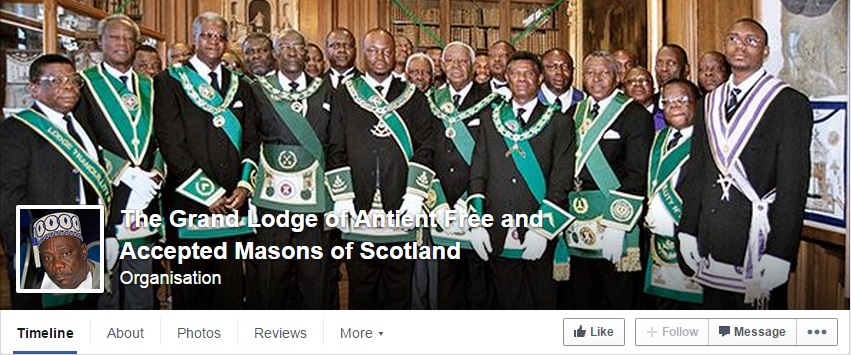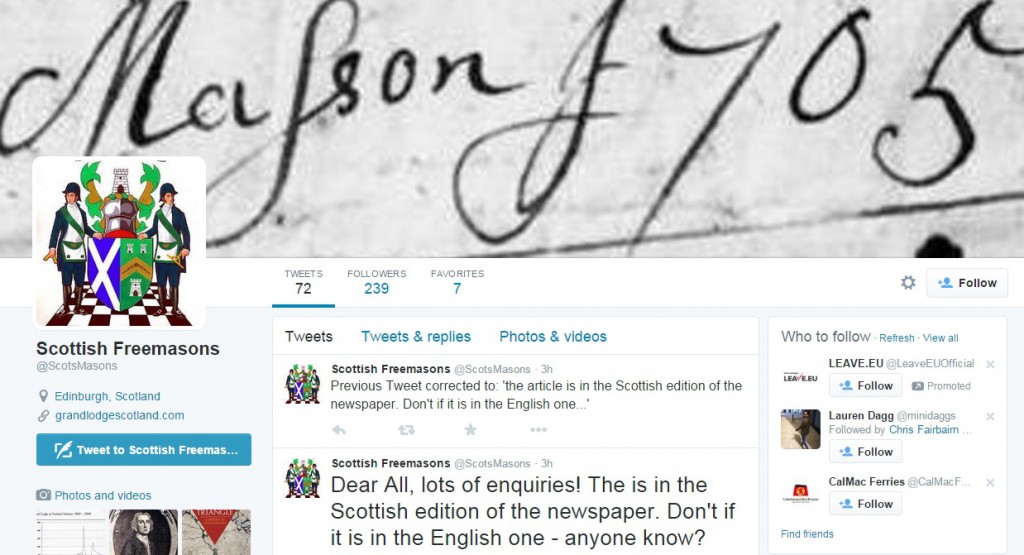SCOTLAND’s Freemasons have signed up to Facebook and Twitter in a bid to attract younger members to their ageing community.
The all-male fraternity have a reputation for secrecy but hope social media will attract a new generation of members.
But instead of a typical drunk Facebook rants or group selfie, the Grand Lodge of Scotland have been quietly posting lengthy historical information posts to over 3,000 followers.
And their Twitter account has racked up 237 followers since their first message on August 18, which read: “Just setting up my Twitter #myfirsttweet.”
On Facebook, masons have been eagerly discussing the correct wearing of aprons.
Facebook user, Julio Esquivel wrote: “Following with this topic on the history of the Scottish apron, I’m clear on the semicircular flap and the letter G in the middle of the square and compass.
“But when you ‘Note that he is wearing his apron under his jacket – just as Scottish Freemasons are supposed to do today’, I was wondering if there´s any reason at all?”
Ferg Smith responded: “What a belter of an apron keep your knees warm.”
It appears that some non-Masons have gone on to the site to troll members and that some members hit back, although these comments have been deleted.
The page – The Grand Lodge of Antient Free and Accepted Masons of Scotland – posted: “With benefit of hindsight we agree that we should not have ‘risen to the bait’.
“We have listened to the wise words of those more used to social media than we, and therefore have removed the various posts and comments. Bear with us please – we are still learning.”
Robert Cooper, curator of Grand Lodge of Scotland’s library and museum said: “Traditionally, we have been one of the few organisations on the planet that does not actively recruit members.
“We have never stood on street corners handing out membership forms or anything like that but we are conscious that the masonic population is getting older. We want to get more youngers in it to keep it going.”
“In a space of a few weeks we have had more than 100,000 visitors,” said Mr Cooper of their Facebook page. “Around half of those who visited the site are under 40, which is very encouraging.
The masons have also said they hope to attract more university students by hosting a number of open days and summer schools.
But the decision to draw attention to the community has proved unpopular from many longer standing masons.
“Our Facebook page is public and open to everyone, but some of our older and more traditional members would prefer it to be private.
“I feel strongly that the decision was the correct one because we have nothing to hide. If people visit our Facebook page, and are interested, they can leave a message and we can get back to them.
“We just have to accept that some of the older generation don’t want to engage with it.”
The group’s decision was prompted after research showed that yearly recruitment figures have fallen to their lowest since the mid 19th century.
The Grand Lodge of Scotland’s new recruits have fallen from more than 45,000 a year in 1918 to around 2,000.
“We are now back to where we were in the 1950’s, but we aren’t weeping and wailing about the decline,” said Mr Cooper.
“However, we do recognise it, and it does cause some stresses and strains, and it does have a financial impact.
“We had huge intakes after the First and Second World Wars and, frankly, we realise that we are never going to get to these levels again.
“We prefer the word private. If we are truly secret, no one would know about us.”
Since the 1970’s, Freemasons have been at the centre of numerous conspiracy theory rumours including reports of secret handshakes and allegations that they plotted the French Revolution.
In a bid to offer more transparency, the Grand Lodge of Scotland plan to open their Edinburgh headquart
ers to the public on November 7.



